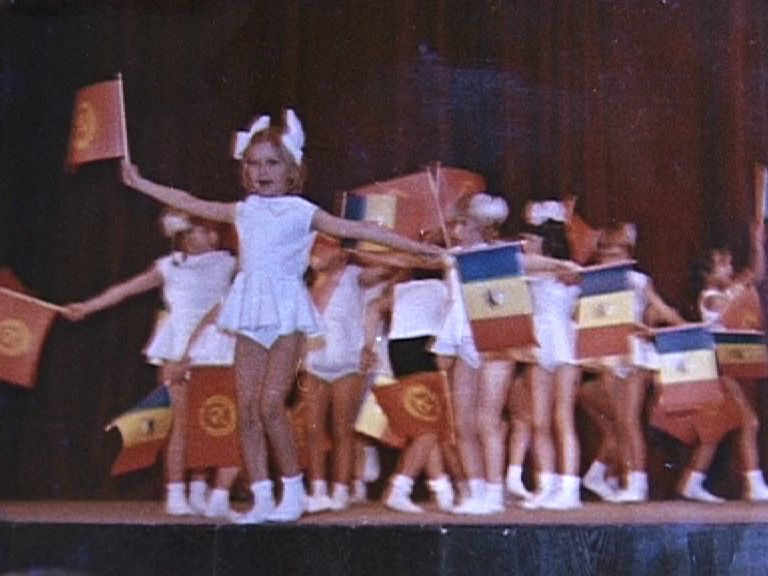Articles (Eng)
wednesday 4 april 2012
Healing the wounds… of those who are not dead.
by Mr Camille Brunel
English translation by Alexis Tadié
Vanina Vignal speaks : ‘If there are empty seats beside you, let us know ! There are people who can’t get in !’ This film is close to her heart: she records the testimony of a childhood friend who grew up under Ceausescu. This is, as ever, the quest of what lies hidden in an eye. Where is the dictatorship, where are its aftereffects, in the green eyes of this beautiful young woman of 40, who is being interviewed here, who appears, there, as a teenager, in old family films which have been dug out of the past, and interrupt the sequences of remembrance ? Where is the dictatorship in the eyes of the young woman who kisses Kevin Costner, on a handful of photographs, in 1985 ? There is also this moment when an old photograph takes over the cinema screen: it shows a tired old granny, holding a young girl in her lap. It is a long, still shot. Four eyes on screen, two hundred eyes in the auditorium. Staring at each other. The effect is close to that produced by the eyes of animals in Denis Côté’s BESTIAIRE (cinéma du réel festival, 2012). We feel looked at, deeply. Something is happening, something touches us. Silence is total. These four eyes have seen the dictatorship. Vanina Vignal interrogates this sad strangeness. She is never taken in by what is not said; behind the speakers, a mirror often reminds us of the dark side that is always there. Eyes are the true heroes of this film – the still photographs of the vacant eyes of a grand-father who survived forced labour, or the eyes of a heroine marshalled into a propaganda film. This, perhaps, would be overwhelming in another context, but not in AFTER THE SILENCE, which is a true treatise on eyes and gazes.
AFTER THE SILENCE shuns political discourse. At most, it mentions the ways in which the Rumanians did not talk about politics when it was an open wound. There is the fascinating interview of a young teenager in 2012 ; in order to free herself from the past, she does not talk about politics either. There are therefore three types of silence: the silence of those times, the silence of testimony, the silence of the young girl. Or again: silence in the past, in the present, in the future, always with the same purpose, to avoid touching the wound. After the end of dictatorship, the Rumanian people has kept on complaining, says the young woman. Because they were unable to take their lives into their own hands, individuals were not happier when they won this freedom which they did not know how to handle. In the last shot of the film, two identical women follow each other. Two ways of living. Two clones. Last week’s motifs of the festival keep crowding in. How can we not think of the passivity of the inhabitants of Corbeil-Essone, in Julien Meunier’s La Cause et l’usage (cinéma du réel festival, 2012), individuals without politics, pleased because they have a little father who takes them by the hand, and who are content with a simulacrum of democracy.



